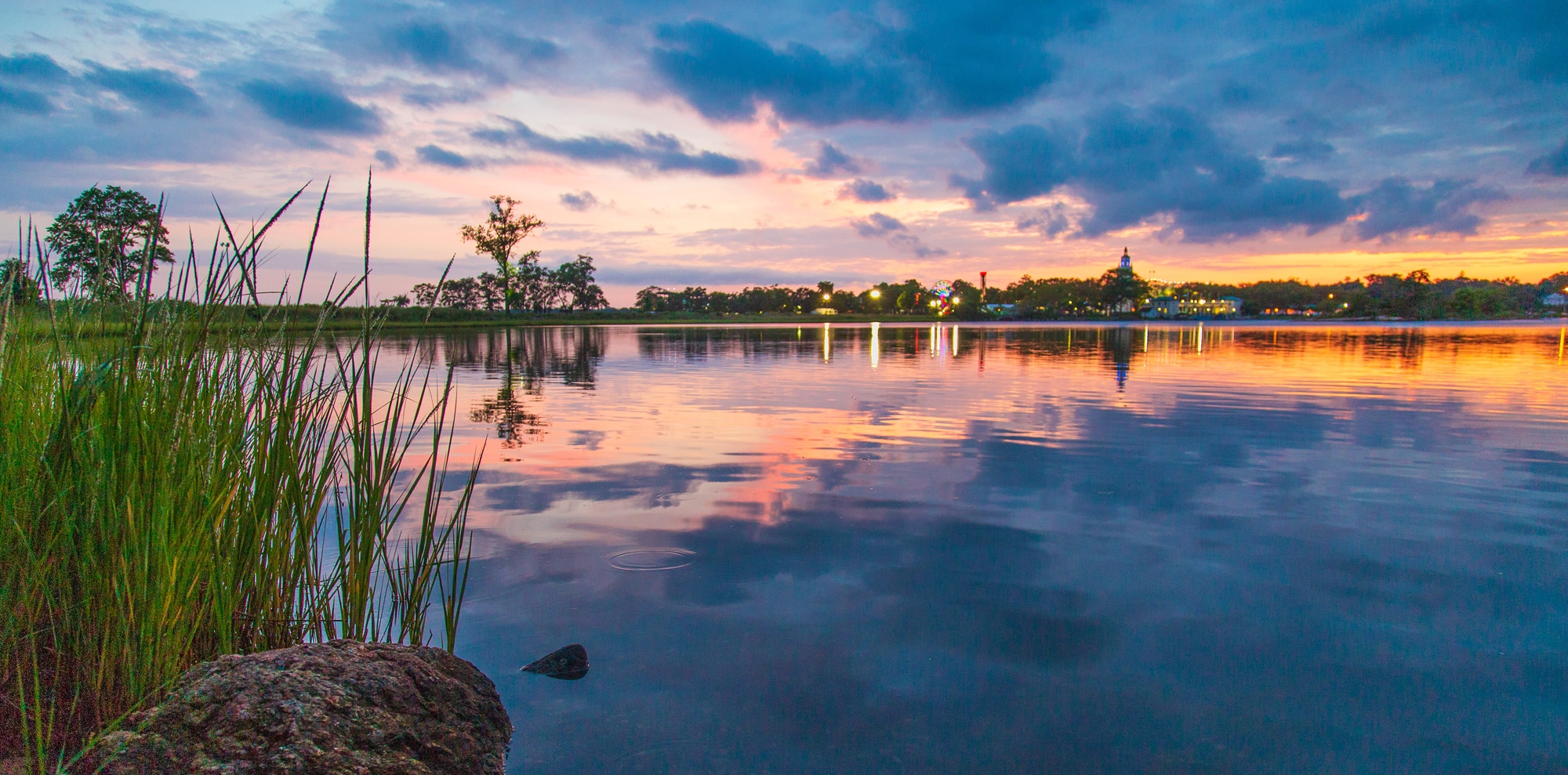A Fascinating Look At The History Of The Land
By: Paul Rheingold / Board Member / Edith G. Read Wildlife Sanctuary
FRWS Board Member Paul Rheingold has compiled a comprehensive history of the sanctuary that begins in 1660. This is a gem of a story and we hope you enjoy reading it.
The Edith Read Wildlife Sanctuary encompasses 179 acres at the southern end of Manursing Island in Rye. The mainland makes up 94 acres; Manursing lake (also referred to as Playland Lake) is 85 acres. What one sees today was created in the winter of 1928-1929 and bears only small resemblance to what it was historically.
The area encompassing the Sanctuary, in common with all of Manursing Island, had its geological origin in sand and rock outflow from the last glacial age. In the 1600s, what was then called Manussing Island was a region of above water patches of land, sometimes called hummocks, interspersed with marshy areas. It was separated from the mainland by a stream or inlet, referred to as the Gut.
In 1660, three families from Greenwich purchased the island from the local tribe of Indians, and they began to farm it and build cottages on it. This would have included the Sanctuary area, but there is no known map or trace of the actual development. After the early settlers moved to the mainland (Mill Town, later Milton Point), they continued to farm the land on Manursing’s high grounds and harvest sedge from the marshy areas.
Let’s fast forward to the mid-19th century. The island was purchased in 1850 by John Adams Dix, a US Senator and Army General who built a causeway over to it from what is now called Kirby Lane. He built a house at the northern end of the island, but never lived in it. He sold 85 acres of the southern end of the island, including what is now the Sanctuary to William P. Van Rensselaer, offspring of the upstate Dutch Patroon family.
Van Rensselaer built a mansion, in the Italianate style, around 1852. He put extensive outbuildings behind his home, on property which is now in the Sanctuary. The massive stone foundations are still present, and can be found at the eastern end of the sanctuary behind the outbuildings of the Manursing Island Club. See article, Rheingold, To a Manor Born: The Van Rensselaer Estate, Rye Record, 3/9/07.
Pursuant to a forward seeing Master Plan, the County of Westchester purchased the land which is now the Sanctuary in 1923. To this was added land on the mainland where two amusement parks existed. See Rheingold, Rye (Postcard views, Arcadia, 2009).
In 1928 the inlet was excavated, Playland Lake was dredged (to a depth of about 30 feet); and the islands, which had rocks underlying them, were carved out; and the current pond between Manursing Way and Kirby Lane was similarly created. The fill from this dredging was used to fill in low places in what is now the Sanctuary. This explains the relative flatness in the park and the lack of an old, mature forest.
The old amusement parks were torn down, and Playland, as we know it today, was built in the six winter months. On Memorial Day in 1928, the first, largest and oldest county run amusement park appeared, setting all records for speed of construction. The lake was used for boat rides and other water sports. The mainland part of what is the Sanctuary for the 57 years from 1928 until 1985 remained part of Playland but sadly, it was used only for dumping garbage, old rides, and growing plants. It enjoyed no environmental protection.
The sanctuary’s namesake, Edith Gwynne Read, a lifelong Rye resident, was born in 1904. Among her many conservation activities she played the leading role in the creation of what became the Edith G. Read Wildlife Sanctuary in 1985.
The life of the sanctuary began in 1970s with Edith Read taking the first steps creating an agreement between Westchester County and the Long Island Sound Task Force and the Federated Conservationists of Westchester County, Inc. to stop the dumping of dredge spoil on what would become the land carved out of Playland Park for the Sanctuary. The two organizations named above became plaintiffs in a suit to end the dumping. They employed Garrison Corwin, a Westchester lawyer who specialized in environmental litigation. Edith Read paid the legal fees.
After a long delay, Edith persuaded county legislators and the new county executive in 1983 to agree to dedicate the land as a natural park. Negotiations lasted on, as to granting perpetuity to the sanctuary, boundaries and activities. Edith refused to accept anything less than a sanctuary “forever wild” deeded by the county. Edith also initially refused the honor that the county wanted to bestow on her by naming the sanctuary after her. Finally on Oct. 5, 1985, the Edith G. Read Natural Park and Wildlife Sanctuary was created and dedicated, at a ribbon cutting ceremony in the sanctuary.
Read and Corwin, along with Fran Borst, then realized a need to create a “friends” organization to pay attention to the needs of the Sanctuary. The Friends of Read Wildlife Sanctuary came into existence in June 1990, Corwin and Borst were charter members. At the same time, Edith’s daughter, Edith M. “Nancy” Lamb, became active and later became president.
By way of commemoration of Edith’s role in creating the park, a monument consisting of a large boulder with a bronze portrait of her, was placed on the property in 2010. Several trees were planted in 2013 around the walkway that encircles this stone monument to honor the memories of deceased founding members of the Friends of Read Wildlife Sanctuary.

